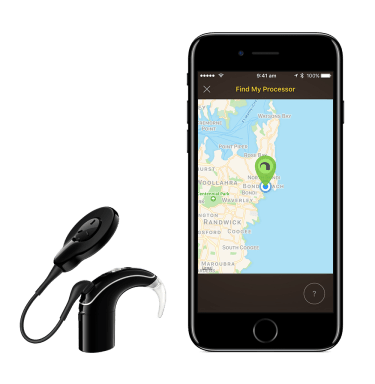
Apple has teamed up with Australian-based Cochlear to bring iPhone users the first made for iPhone Cochlear implant.
Approved by the U.S. Food and Drug Administration in June, Cochlear’s Nucleus 7 Sound Processor can now stream sound directly from a compatible iPhone, iPad or iPod touch to a patient’s surgically embedded sound processor.
The device also allows those with the implant to control and customize the sound from their iPhone.
 There have been other implants and hearing aids that have used iOS apps to control sound and other features and Nucleus’s own app can be downloaded to do the same. However, Cochlear’s newest processor is controlled by the phone itself and does not require an app download.
There have been other implants and hearing aids that have used iOS apps to control sound and other features and Nucleus’s own app can be downloaded to do the same. However, Cochlear’s newest processor is controlled by the phone itself and does not require an app download.
More than 50 million Americans have experienced some sort of hearing loss due to one reason or another. Apple saw the hearing loss problem and has spent a number of years developing a hearing aid program within the company.
Apple soon developed a protocol the company offered for free for hearing aid and implant manufacturers to use with their devices.
“We wanted to see something that could become ubiquitous out in the world,” Apple’s Sarah Herrlinger, senior manager for global accessibility policy and initiatives told TechCrunch. “We want everybody to use our technology and to say ‘wow my iPhone is the best piece of technology I’ve ever used before’…with every iteration of our operating system our goal is to add in new accessibility features in order to expand the support that we can give to people all over the world.”
Accessing the control settings for your Cochlear implant is relatively easy. Those who get the new Nucleus 7 Sound Processor or other made for iPhone hearing aid simply go to their iPhone settings, click on “General” and then click “Accessibility.” As you move down the screen you’ll see a list of different devices you’ll see “hearing devices.” Tap on that and then the device should show up the way a Bluetooth device would in Bluetooth settings. The implant will then pair with your iPhone.
Just like headphones or another Bluetooth-enabled device, as soon as the implant is paired up it can be controlled using the iPhone’s volume controls. So, for example, when a phone call comes in, you can hear that call at the volume settings within your implant.
The new Nucleus 7 comes with a longer battery life and is also smaller and 24 percent lighter than its predecessor, the Nucleus 6 Sound Processor, making it ideal for small children with hearing loss as well.
“The approval of the Nucleus 7 Sound Processor is a turning point for people with hearing loss, opening the door for them to make phone calls, listen to music in high-quality stereo sound, watch videos and have FaceTime calls streamed directly to their Cochlear implant,” Cochlear CEO Chris Smith said in a statement. “This new sound processor builds on our long-standing commitment to help more people with hearing loss connect with others and live a full life.”
